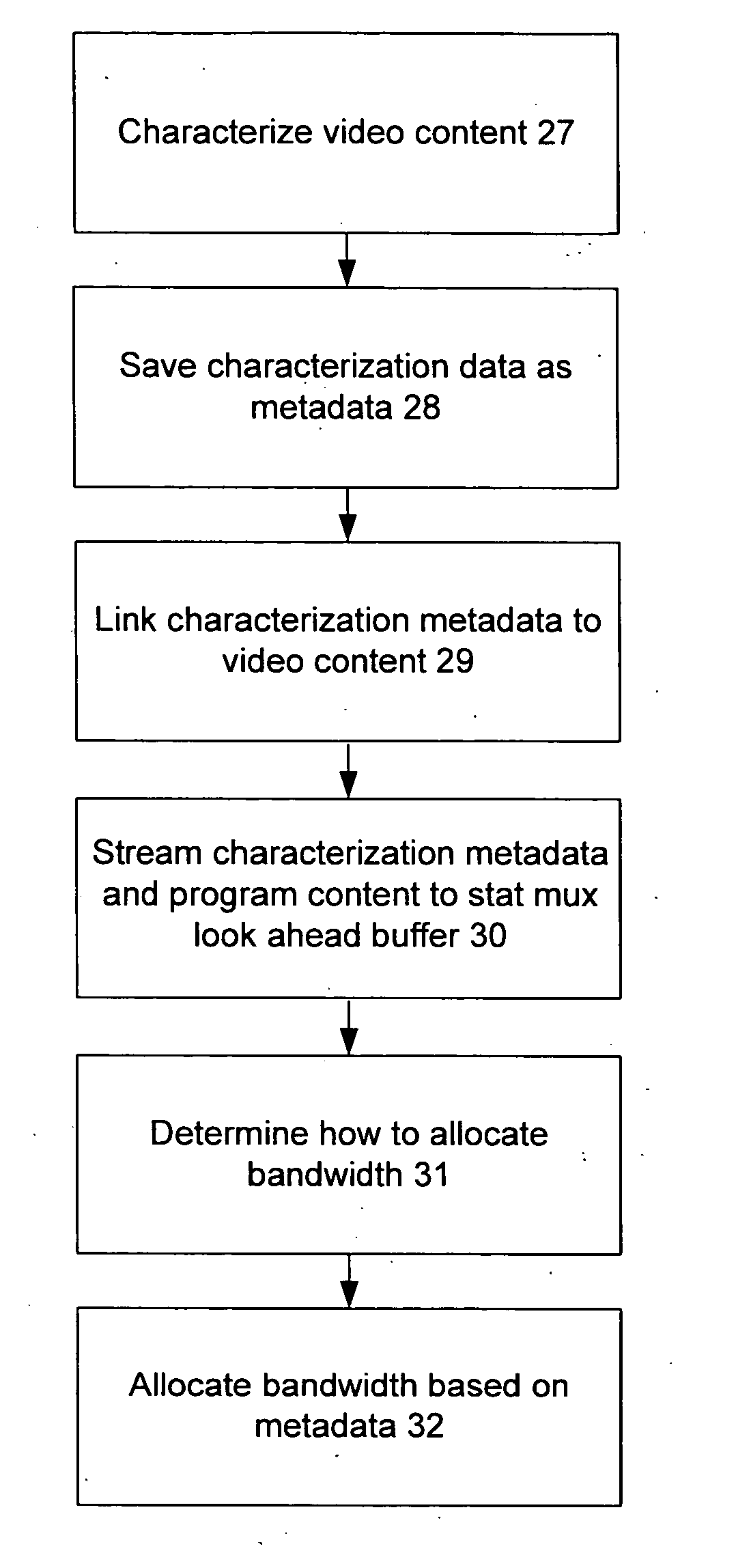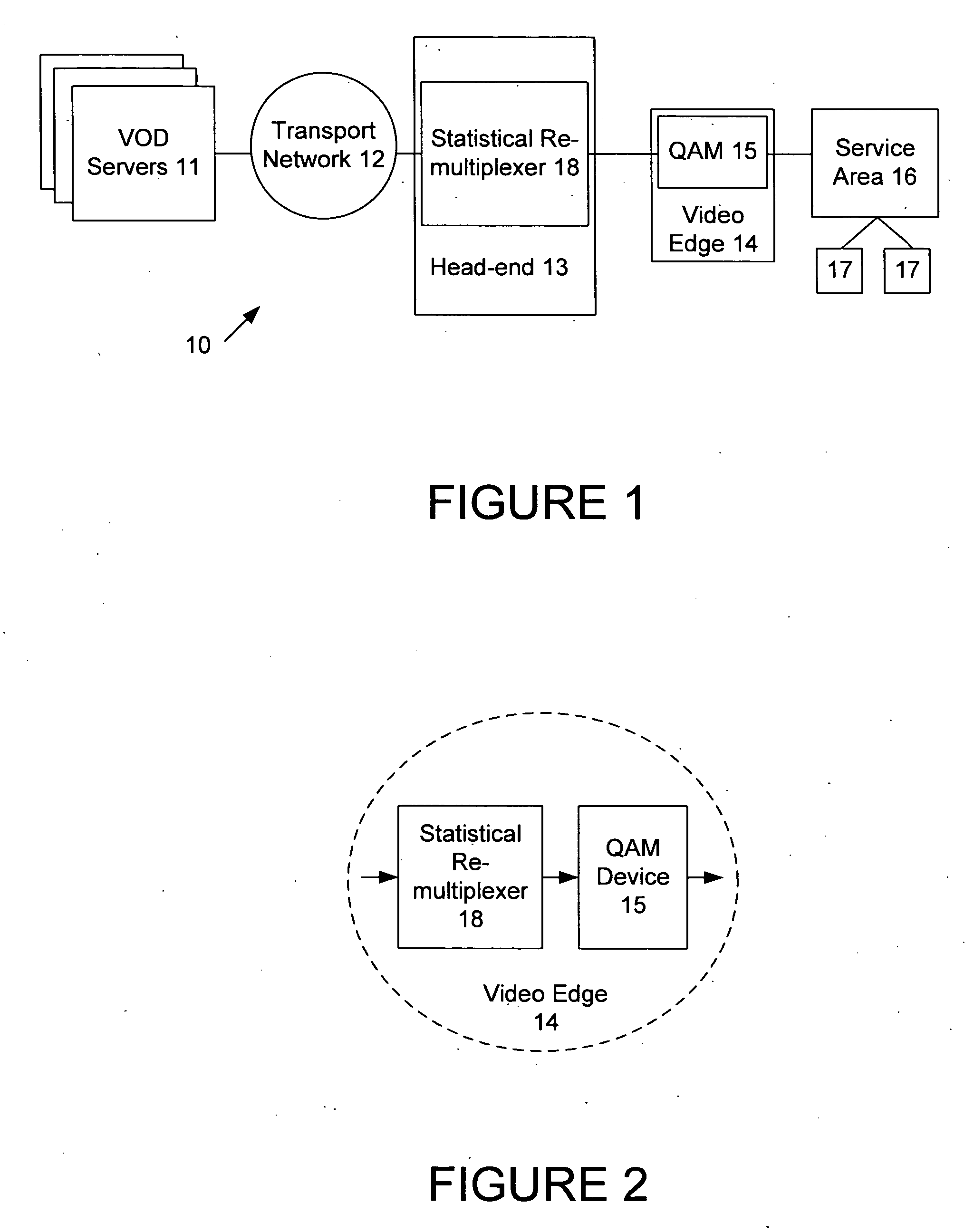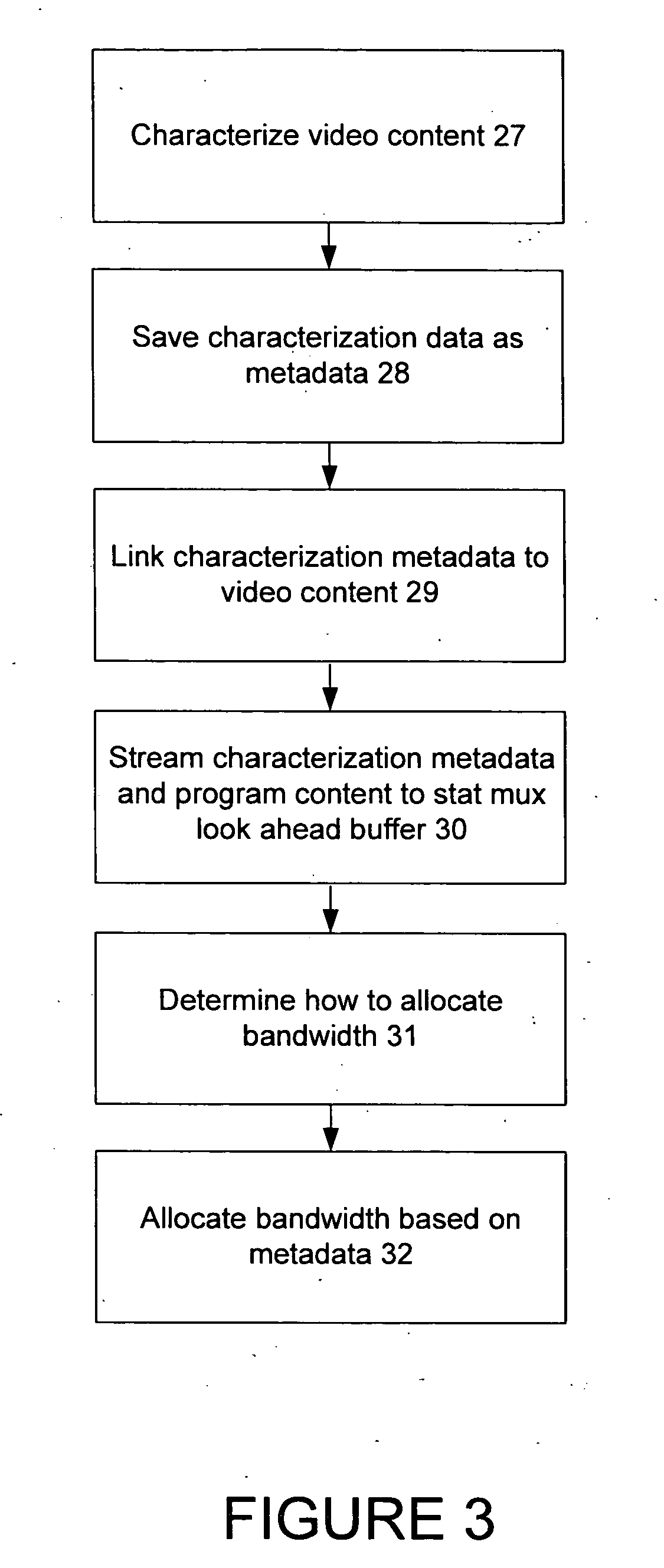Statistical remultiplexer performance for video on demand applications by use of metadata
a technology of statistics and multiplication, applied in the field of digital cable systems, can solve the problems of less appealing vod applications, significant latency, and longer delay, and achieve the effects of reducing the latency of stat mux, efficient allocation of bandwidth, and improving the performance of statistical remultiplexers
- Summary
- Abstract
- Description
- Claims
- Application Information
AI Technical Summary
Benefits of technology
Problems solved by technology
Method used
Image
Examples
Embodiment Construction
[0009] The present invention seeks to improve the performance of a statistical remultiplexer (stat mux) in a cable distribution system. More specifically, the present invention appends metadata to video on demand (VOD) program content. The metadata describes the bandwidth requirements for the program content. The stat mux uses the metadata to reduce the latency of the stat mux in response to a viewer function request such as to start a program or to pause or fast forward.
[0010] In accordance with the present invention, a stat mux dynamically multiplexes a plurality of variable bit rate MPEG2 channels into a single transport stream that has a maximum bandwidth such as, by way of example, about 39 megabits per second (Mb / s). The stat mux varies the portion of the bandwidth allocated to at least one channel based on information provided by metadata associated with the channel. The metadata describes the bandwidth requirements for each channel so that bandwidth can be calculated ahead ...
PUM
 Login to View More
Login to View More Abstract
Description
Claims
Application Information
 Login to View More
Login to View More - R&D
- Intellectual Property
- Life Sciences
- Materials
- Tech Scout
- Unparalleled Data Quality
- Higher Quality Content
- 60% Fewer Hallucinations
Browse by: Latest US Patents, China's latest patents, Technical Efficacy Thesaurus, Application Domain, Technology Topic, Popular Technical Reports.
© 2025 PatSnap. All rights reserved.Legal|Privacy policy|Modern Slavery Act Transparency Statement|Sitemap|About US| Contact US: help@patsnap.com



